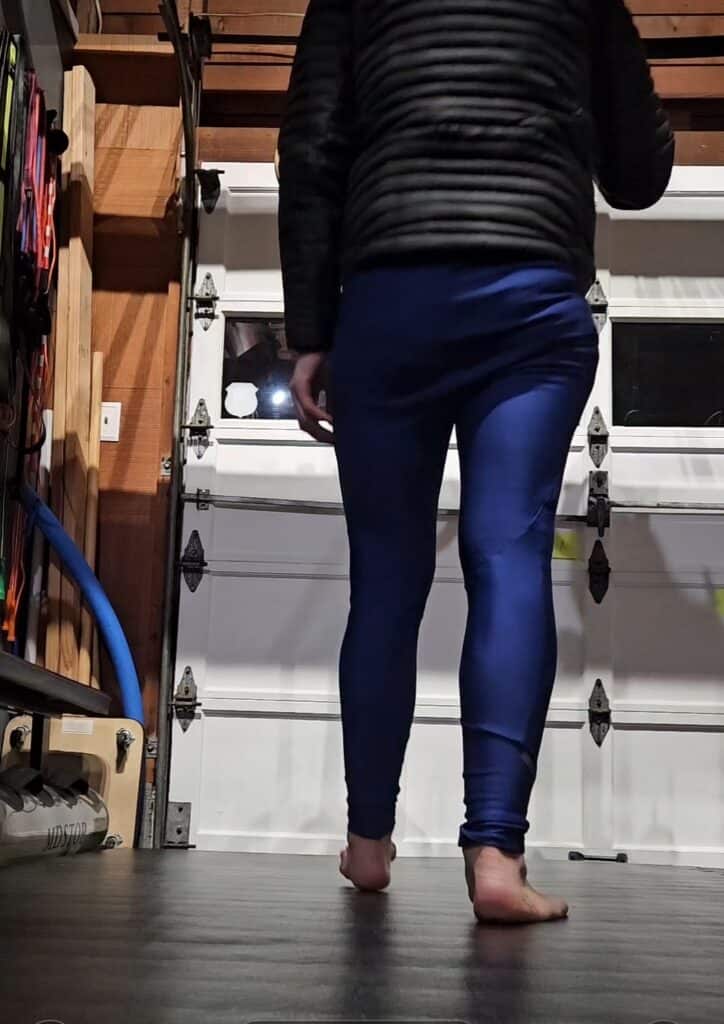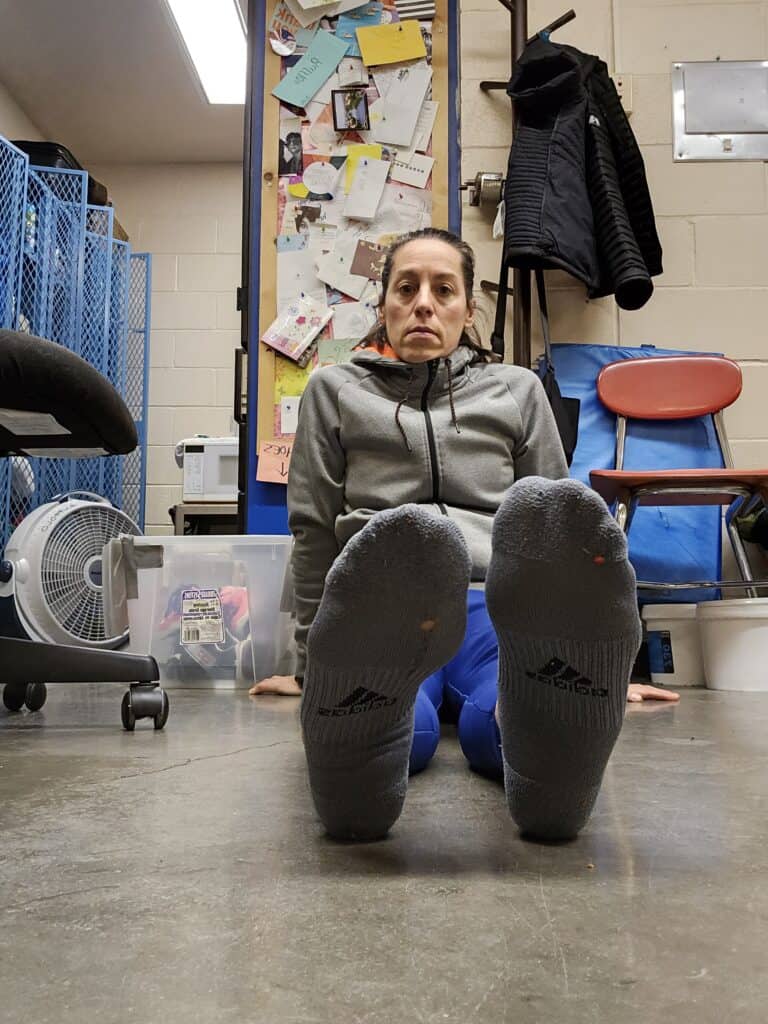I was so close. I had felt and figured and whittled and realized. I had my longest running issue narrowed down to a dysfunctional half of the pelvic floor. It was just the wrong half. I was convinced that it was my right and gave multiple reasons as to why, BUT my belief skewed how I interpreted what I was seeing. It even bled into justifications into what I was feeling. This is the strange and wacky world of perception: gathering evidence to keep confirming an imaginary line.
The road of chalk started disintegrating when I got a weird knee pain. As annoying as it is, I like that pain, particularly new pain, forces you to really pay attention to what is. I recorded my interaction with this new sensation, and through all my poking and prodding my thoughts kept returning to what I did the day prior that would have triggered such a reaction. The location lead me to the crow pose. It’s not something I do often, but between four classes I probably worked it for about an hour. The question that lingered, though, was why the inside of the left knee?
Then I remembered Adarian. He told me how he struggled with the pose and couldn’t get onto his hands until he figured out how to work his pelvic floor. I went back through the steps I outlined for students to ‘get it’: forward lean, bend elbows, chest to floor, point one foot to get it to hover off the ground, then the other... That sequence. Right foot first, then left. Always in that order. Ah. The right side was pulling up the left.
The left side was my impaired side.
It was the same side I blew my ACL out on.
I did not have incontinence issues before that surgery.
It couldn’t be that obvious and linear. My left side always seemed more reactive. When I was standing, my left side held more weight. Maybe the limbs did more because the pelvic floor had been vacant. When I was using the restroom, I always felt my right side work. Maybe it wasn’t a contrast to a continuously working left, but the only impetus that could push or pressurize. My left leg was my up leg. Maybe the right squatted because it had an active floor work with.
I had actually said to myself, the right side drops into a squat because there is no bottom there to stop it.
Rationalization shapes our reality.
Click, click, click, click, boom.
I went to go film. I needed proof for this new direction.
The first thing I shot was this zipper ‘straightening’:
I had been reviewing some older rib alignment footage and tried and found a much simpler route. This first act was as if I needed to demonstrate efficiency can be found elsewhere.
The coolest thing about the body is that changes can be made in a multiple of ways. It is also what makes it so maddening. Detangle this billion-celled extension cord. (And write about your progress as you’re doing it.)
My mind works in buckshot rather than lasers. I pick what I like and notice from there. I start with what is pleasing or familiar. It is less about trunks or branches and more about a particular leaf, lit just so, or lilting in the wind.
I keep learning and I keep noticing. More connections. More fits. Parts, wholes, systems, self, others.
How do we get more harmony and less conflict? What do you see and what do you think about what you see? What might you be missing?
It’s the wrongs that act like a slingshot into hyperdrive. Oh. OH. Here, there, what if.. Yes. Yes. YES. Damn. It was here the whole time.
The following was my deluge of tests to see if I was indeed now on a more correct path:
To sit into that half I had to get the other leg out of the shared space. Pelvis could extend as downward squat occurs.
[Jacket logo side is left side.]
Non pelvic floor side would shift laterally instead of down. My entire left side is my up side (arm and leg). Now I might know why. Here I am able to push down into the pelvis and still get suspension through the hang. I try to minimize the assist of the right leg by straightening the lever.
Then I postulated why the pigeon pose frees up so much on this left side — it allows the pelvic half to extend, load, AND you can simultaneously pull the foot and press the pelvic floor into the ground:
More than just external rotation.
To come full circle, I came back to the alleged scene of the crime:
As I did vs. as I can now do. There is a pelvic floor action to lift the foot. Before always right first.
[Camera flipped again. Right looking and then camera facing is left.]
Still, I wasn’t satisfied. I wanted one more. I needed to see less lateral shift and more straightened suspension. I found it in the birddog:
This was beautiful. I saw it all. Pushing back into the pelvic floor gave me the lifted length and stability I didn’t know how badly I was lacking. [I flash a ‘L’ for left side to remind myself of camera flip.]
Pleased and reviewing the videos about an hour later, a video frame caught my eye:

The curve of this right ankle/ achilles. A still from the hanging video.
It made me connect to an observation that Adarian made about my left foot long ago. It is also curved:

The left foot is the left viewing foot.
Right back side, Left front side. Curved = loaded with an imbalance. Perhaps the torsional tension pattern of my body was laid out in two photos. Loop seen, will pull an end, and note what happens. Ideally, with minimal lean in view.
Feature Photo by Masood Aslami via Pexels.

